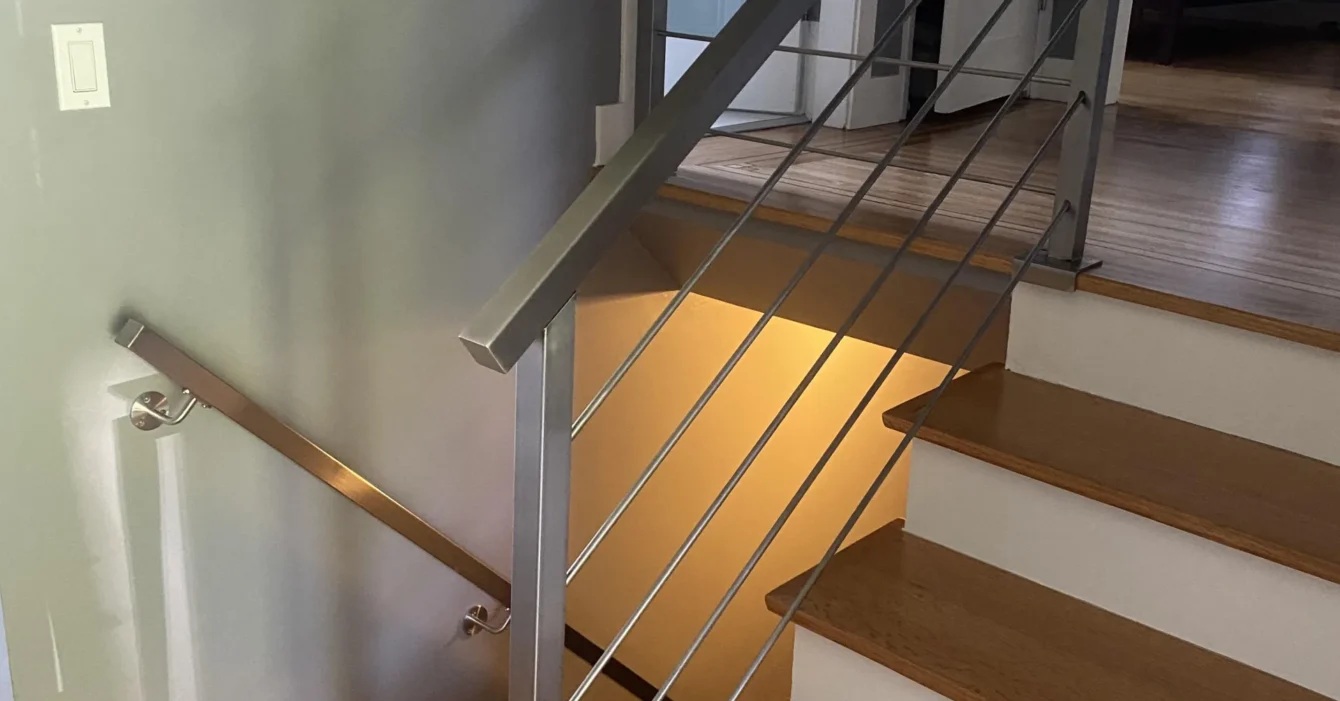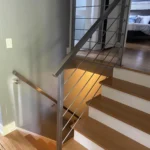In the field of home design, the staircase is sometimes the centre point, a major element attracting attention and linking the several floors of a house. Homesowners are looking for sleek, modern, and functional choices for their stairs more and more as design trends change. Using cable railing is one style that has become somewhat well-known. Providing the ideal fusion of form and purpose, cable railing for staircases is revolutionising stair design.
The Appeal of Cable Railing
Modern railing systems called cable railings substitute tensioned wires for conventional spindles or glass panels. This contemporary approach to railing guarantees durability and safety while nevertheless having a simple look. Usually composed of stainless steel, the robust and durable cables are a great option for staircases both indoors and outside.
The open and airy impression of cable railing is one of the main reasons homeowners are leaning towards it. Although classic railings are efficient, occasionally, their closed-off appearance disturbs the flow of space. Conversely, cable railing provides unhindered vistas that let light flow through and create more room feel-space. In homes with open floor layouts or in places where natural light is valued most, this is quite helpful.
Cable Railing’s advantages for stairs
1. Durability and Low Maintenance
Built to last are cable railing systems. Resilient to corrosion, rust, and wear, the stainless steel cables guarantee maximum performance even after years of use. Cable railing is rather minimal maintenance compared to wood or wrought iron, which could call for frequent upkeep like staining or painting. Often, all it takes to keep the cables looking perfect is a basic wipe-down with a moist cloth.
2. Versatility in Design
Versatility of cable railing for staircases is another benefit. Whether your house is modern, industrial, or even rustic, cable railing can be tailored to meet perfectly your style. The clean lines of the cables accentuate glass, metal, and wood among other materials. For homeowners wishing to remodel their stairs without a full makeover, cable railing is a common choice because of its flexibility.
3. Safety and Code Compliance
When it comes to staircases, safety is always first; cable railing is also provided in this regard. Properly erected cable railing systems satisfy all pertinent safety guidelines and laws. Homes with children and pets should choose the tensioned cables since they are positioned close enough to avoid mishaps. Furthermore, the materials’ endurance guarantees that, over time, the railing will be solid and safe.
How to Incorporate Cable Railing into Your Stair Design
Including cable railing in your stair design is simpler than you would have guessed. Cable railing can be modified to fit your requirements, whether you are renovating an old staircase or building a new one. These pointers should help you get going:
- Choose the Right Material Combination: For a balanced design, think about matching cable railing with a metal or wood handrail. While a metal railing might improve the futuristic look, the softness of wood can help the wires to lessen their industrial sense.
- Opt for a Minimalist Approach: In cable railing, less is generally more. Keep the design basic and let the wires’ elegant lines take the stage.
- Ensure Proper Installation: Having your cable railing system expertly fitted can help to guarantee lifetime and safety. Maintaining the integrity of the system depends on correct tensioning of the cables.
Conclusion
Cable railing for stairs is not only a fad, but it is also a wise investment in the appearance and utility of your house. Selecting cable railing can help you design a contemporary, open, and safe atmosphere that accentuates the general attractiveness of your area. Whether you’re building a new house or remodelling your present one, cable railing provides a flexible and strong solution with lifetime value.
For more information on how to incorporate cable railing into your stair design, visit Ice Blue Steel Ltd.












